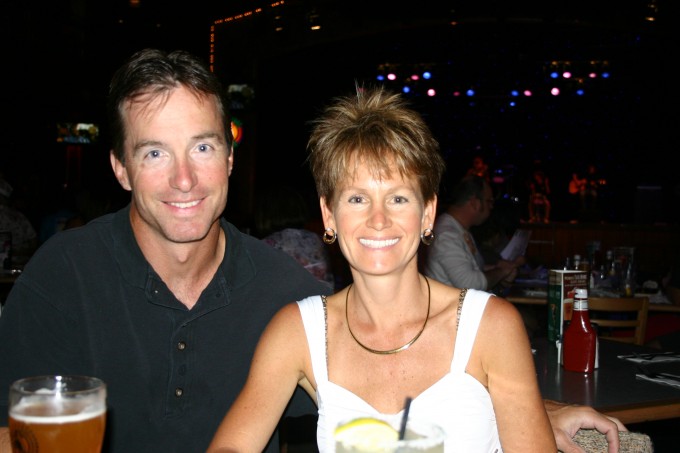Misconceptions About the Shortened e.max Cycle
There are a lot of misconceptions, hyperbole and misunderstandings regarding the shortened cycle for e.max, and because this topic keeps coming up again and again, I thought it appropriate to dedicate another blog post to it.
I want to take this opportunity to review some facts, and let the folks make their own decisions regarding the shortened cycle and whether they want to use it or not in their practice. We as clinicians should always heed manufacturer instructions, however, sometimes it makes sense to read between the lines.
First - here is a blog post that I did a while back on this topic that addresses the strength issue:
I had the opportunity to be the opening keynote at a CEREC conference in Quebec, Canada. The event was amazing and it was absolutely brilliant how the entire Patterson Canada team came together to do this event. I've attached a brief video of Friday evening's festivities to give you a glimpse of how beautifully executed the symposium was.
There were some great speakers at the event, one of them being Dr. Fasbinder who I've had the pleasure of knowing for years now. He is a researcher at the University of Michigan and one of the most knowledgeable people I know when it comes to CEREC materials. We started discussing one of my favorite topics: the shortened e.max cycle.
Dr. Dennis Fasbinder presented some data on the fast fire. According to his data, you have a roughly 20% loss of strength with the fast fire. His data showed that at a 28-minute firing cycle, the strength was 476 mpa. At 19 minutes it was 456. At 12:40 it was 378 and Empress CAD glazed 177.
When Dr. Paul Child originally did the study, he found no loss in strength. So best case scenario you have no change in strength; worst case scenario you lose 20%.
Dr. Fasbinder also stated that in his numerous ongoing clinical studies, the worst success rate with ALL materials is 96%.
He and I were at dinner and we had a great discussion on how strong is strong enough. In other words, if I have a weaker material (VITA, Empress) and the lowest success rate with those materials is 96% in his studies, then isn't a supposedly "weaker" e.max with the shortened cycle at 378 mpa strong enough?
My contention remains that for routine work, the roughly 8-18 minutes saved in the fast fire cycle is well worth the loss of strength (even if its 20%). That 378 is still more than twice as strong as anything else.
I've asked Dennis to come on the site and discuss this as he feels that there are enough users here to collect some real world data to see if the 378 in his data is a big deal or not.
To me, loss of strength is not a reason to not use the shortened cycle at all. The restorations are "strong enough" in most routine applications. Dr. Russell Giordano has done a study similar to Dr. Paul Child’s study, where he found no loss of strength in e.max. so with three independent studies, two found no loss of strength, one found approximately 17 percent loss of strength from the 19 minute to the 12:40 cycle. So if you average the three studies, you have about a 5 percent loss of strength when you go to the shortened cycle.
The next area of contention is the incomplete conversion of lithium metasilicate to lithium disilicate when you fire the restorations. This conversion of the meta to the di is what causes the restorations to change color as well as gain its final strength. One may feel that if there is incomplete conversion in the shortened cycle. This may be interpreted as a problem.
However, let’s look at this conversion and look at the facts:
- Yes there is incomplete conversion of the meta silicate in the 12:40 cycle. However, there is incomplete conversion at the 19-minute and 26-minute cycles as well. In all the cycles, some level of meta silicate remains in the restoration.
- The only side-effect of the incomplete conversion appears to be a slight color modification on e.max LT blocks – as reported, the restorations look a bit "bright" – there is no effect on color on the e.max HT blocks.
- Even with the incomplete conversion, there appears to be virtually no loss of strength (5 percent, as stated above)
- Lithium metasilicate causes no damaging effects to the body – meaning it’s not as if your patients are going to develop any abnormal symptoms from metasilicate in their restorations.
So if you look at the facts, other than a slight color issue with LT blocks and a slight loss of strength, using the 12:40 cycle seems to have no ill effects. As a clinician, what you have to decide is when the seven to eight minutes of time savings is enough for you to use the shorter cycle. If time is not an issue, by all means use the 19 minute. But clinically I’ve used the 12:40 for several years with no issue whatsoever.
Does this mean that for the future we are completely safe? Don’t know. Until more data comes out, we have to approach with caution, and as I stated above, we should always follow manufacturer recommendations. But you also have to use your clinical judgment.
I leave you with one thought – Let’s assume for a second that you do lose significant strength at the 12:40 cycle. A weaker restoration seems to be the big worry here, that the crowns will break prematurely. My question then is, why are you still using Empress and Vita? An e.max at 12:40 is still twice as strong as anything else. And as Dr. Fasbinder stated, the worst-performing material in his studies still had a 96 percent success rate.
My two cents: I have used this cycle without fear for several years now, thanks to Dr. Child and Dr. Giordano's research. The time savings to me are significant enough where in a busy practice I would not hesitate to use the 12:40 cycle. I know there are speakers and trainers out there proclaiming the end of the world if you use this shortened cycle. I just wonder if they will be as willing to admit they were wrong as loudly if and when Ivoclar ever does change the times officially.
As the manufacturer, we always recommend using IPS e.max CAD as designed. We always attempt to build in a safety factor with our products, in this case to account for whether the prep guidelines could be achieved and which cement was used (conventional, true adhesive, or something in between) that helps support the ceramic and increase the fracture load. In simple terms, dental professionals control the final composition and strength of IPS e.max CAD based on how it is fired in your office. There is a reduction of strength and color shift. Also, our 10 year clinical data is based on the firing parameters that complete the change to lithium disilicate (which has changed over time from 36 minutes to 19:55). We don't know what if any the long term ramifications are to fast firing.
For those of you who have visited Ivoclar Vivadent for an "Open House", we encourage dental professionals to learn and understand the "why" behind products and processes. When you know the why you make better decisions. In the end, take into account the prep design, cement being used, and time to fire and make the best decision for the case presented, knowing the shortfalls or possible risks.
We are continuously looking to speed up the processing time, expand the options to use IPS e.max. and reviewing preparation guidelines for modifications. We welcome "pushing the envelope" ideas or questions. We and this category would not progress as much as it has without them.
I am the first to respond, and welcome additional comments.
My concern would be less about initial strength and more about possible crack propagation over time, has anyone done cyclic loading studies with different firing cycles like the Ones done at NYU?
and what effect does incomplete transformation and a higher content of metasilicate have to hydrothermal ageing over the long term?
Don - great to have you here and thanks for the comments from the manufacturer standpoint.
Richard- No studies done on that other than what has been reported clinically by all the users on the website. There are probably 1000's of closet short cycle users and no evidence of any premature failures. Of course we cannot interpret this the same as a controlled clinical study. Until we have that - you have to approach with caution.
Paul- same as above- no clinical studies.
This was a great blog. Thanks for posting it. I just started using the 12 minute cycle. I can tell you it did make me a little concerned since I was unable to locate any information on it. I made the decision to do 12 or 19 based on the time I have available. If I have time to do an extra 8 minutes I do it. Great post Sam...
Thanks Michael. I think the 12 minute cycle has been misunderstood. Its a tool in your tool belt and when used appropriately, it works great. Anyone who says that saving 8-10 minutes an appointment is not important- well, I would disagree.
Dr Sameer Puri
Please explain how one goes about resetting time to 12:40 on the Programat CS
Thank you and I am very impressed with your new web site. It keeps me hungry for the great blogs I have seen. What is great is that you read and respond. TKS
Dr Sameer Puri. How do I find the program for the shorter fire time. I have a whip mix oven, and I am wondering if it can be done with this oven?
Hi Cecil and David- sorry for the late reply. I missed your questions.
In the video section- there are videos on how to program your ovens. There should be videos for both Ivoclar and Vita.
Dr. Puri,
I know this post is old but I can't find any videos for programming a Vita oven. Is the quicker cycle possible with the Vita vacumat 40?
There is a sticky thread in the general forum on oven cycles. I detailed the rapid cycle out somewhere in that thread, probably relatively near the end of the the thread. You might be able to program your oven for that. I did that for the non-Ivoclar oven owners at the time of the official fast fire cycle release
On 7/27/2017 at 10:17 am, Anthony Paventy said...Dr. Puri,
I know this post is old but I can't find any videos for programming a Vita oven. Is the quicker cycle possible with the Vita vacumat 40?
I had a bit if a start when I first saw your post. We have an Anthony Paventy who is an orthodontist here in Corvallis. Since you are a new member why don't you introduce yourself so we can learn a bit about you.
Hey Sam, but did you ever find any studies on or replies from Bob Winter about the detrimental water absorption effects of the shortened cycle on emax? ;)













